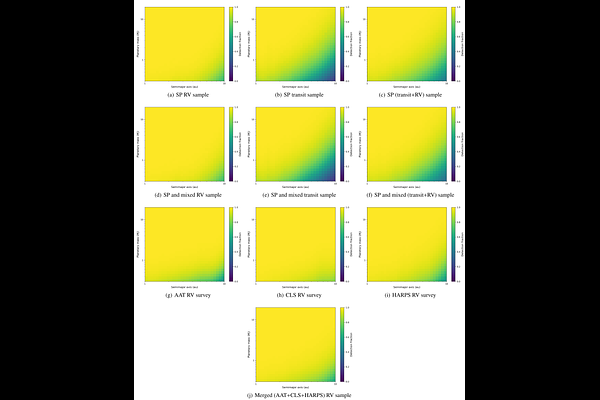Cold Jupiters and small planets: friends, foes, or indifferent? A search for correlations with the largest exoplanet samples

Cold Jupiters and small planets: friends, foes, or indifferent? A search for correlations with the largest exoplanet samples
A. S. Bonomo, L. Naponiello, E. Pezzetta, A. Sozzetti, D. Gandolfi, R. Wittenmyer, M. Pinamonti
AbstractFinding out whether there is any correlation between the presence of short-period small planets (SPs) with $P\lesssim100~d$ ($a \lesssim0.4~AU$) and $1<M_{p}<20~M_\oplus$ and that of outer cold Jupiters (CJs) with $a=1-10~AU$ and $M_{p}=0.5-20~M_{Jup}$ around solar-type stars may provide crucial constraints on the models of formation and/or migration of SPs. However, somehow discrepant results about the occurrence rates of CJs in SP systems have been reported in the literature, with a few recent works claiming a strong SP-CJ correlation but only at super-solar metallicity and/or mass of the host stars. Here we homogeneously recomputed the occurrence rates of CJs at average, sub-solar ($[Fe/H]<-0.1$), solar ($-0.1\le[Fe/H]\le0.1$), and super-solar ($[Fe/H]>0.1$) metallicity as well as at average and sub-intervals of stellar mass, namely 0.6-0.8, 0.8-1.0, and 1.0-1.2 $M_\odot$, with (i) a carefully-selected sample of 217 SP systems, and (ii) a large comparison sample of 1167 solar-type stars. We determined the integrated occurrence rate of CJs in SP systems to be $f_{CJ|SP}=11.1^{+2.5}_{-1.8}\%$; this is consistent with the estimated frequencies of CJs in both the comparison sample ($f_{CJ}=9.8^{+0.9}_{-0.8}\%$) and the HARPS-N survey of transiting SP systems. We found a possible correlation ($f_{CJ|SP}>f_{CJ}$) only at super-solar mass and metallicity, though with a statistical confidence less than $3\sigma$. To test some theoretical predictions, we also searched for possible SP-CJ relations as a function of SP and CJ multiplicity as well as SP composition, and found none. We show that the architectures of SP systems are not indifferent to the presence of CJs as the multiplicity of SPs strongly depends on the CJ eccentricity, as expected from planetary dynamics. A more comprehensive understanding of the relation between SPs and CJs requires larger samples of SP systems. [Abridged]